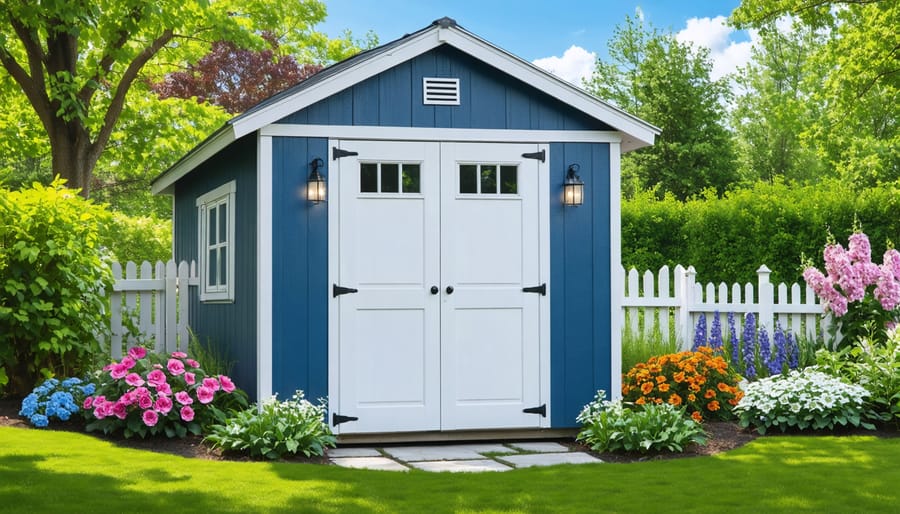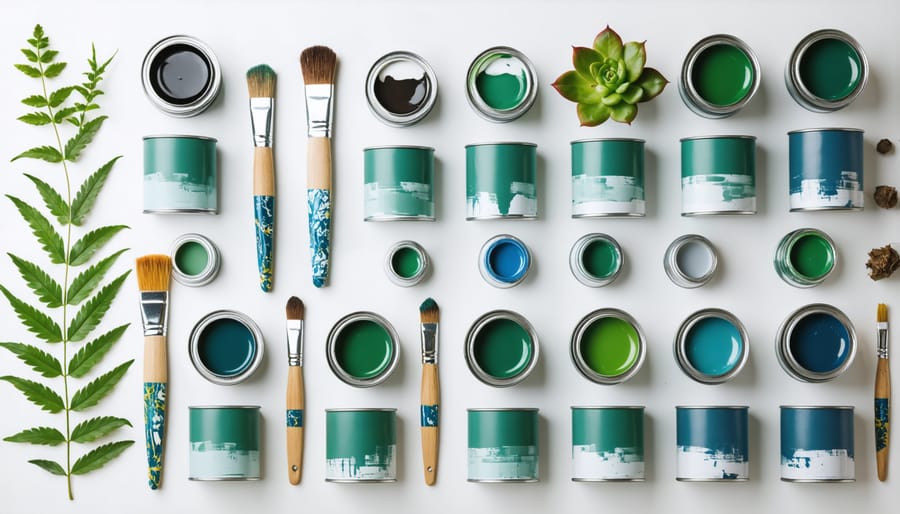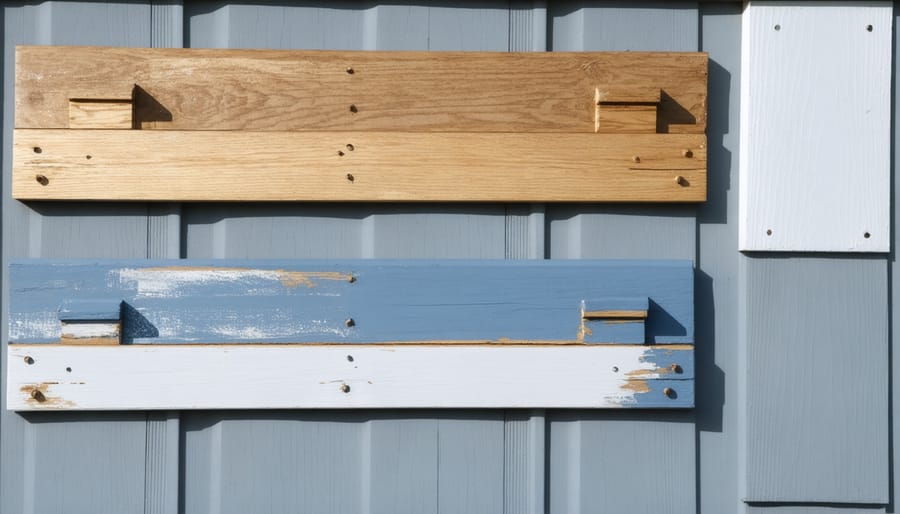Make Your Shed Beautiful and Safe: Zero VOC Paint That Actually Works

Transform your furniture safely and sustainably with zero VOC paint, the ultimate choice for health-conscious home makeovers. Unlike traditional paints that release harmful chemicals into your living space, these eco-friendly paint options contain no volatile organic compounds, making them ideal for indoor use and around children and pets. Modern zero VOC formulations offer exceptional coverage, durability, and rich color options while maintaining indoor air quality. Professional-grade results are achievable without compromising your family’s well-being or environmental values, as these paints deliver the perfect balance of performance and safety. Leading manufacturers now produce zero VOC options that match or exceed traditional paint performance, ensuring your furniture pieces look stunning while contributing to a healthier home environment.
Understanding Zero VOC Furniture Paint
What Makes Paint ‘Zero VOC’?
Zero VOC paint achieves its environmentally friendly status through innovative formulations that replace traditional solvents with water-based alternatives. These paints use specially developed binding agents and pigments that don’t release harmful compounds into the air during application and drying. Instead of using petrochemical-based ingredients, manufacturers rely on natural minerals, plant-based materials, and advanced polymer technology to create durable finishes.
The “zero” in zero VOC means the paint contains less than 5 grams of volatile organic compounds per liter, as defined by EPA standards. While no paint is completely VOC-free, these formulations come remarkably close. Modern zero VOC paints achieve this while maintaining excellent coverage, durability, and color retention through careful engineering of their core components.
The key lies in the paint’s resin system, which forms a strong bond without releasing harmful fumes, making it perfect for indoor use and environmentally sensitive areas.

Why Choose Zero VOC Paint for Your Shed
Choosing zero VOC paint for your shed is a smart decision that benefits both your health and the environment. Unlike traditional paints, zero VOC formulas don’t release harmful chemicals into the air, making them safer to apply and better for your outdoor living space. Even though sheds are typically outdoor structures, many homeowners use them as workshop spaces or spend time organizing inside them – making air quality a crucial consideration.
These eco-friendly paints are particularly beneficial if you store sensitive items like garden supplies, tools, or seasonal decorations in your shed. They won’t leave lingering chemical odors that could affect your stored belongings. Plus, zero VOC paints perform just as well as conventional options, offering excellent coverage and durability against weather conditions.
For those with allergies or chemical sensitivities, zero VOC paint ensures you can freely use your shed without worry about respiratory irritation or headaches. It’s also safer for pets and plants around your outdoor space, making it the responsible choice for environmentally conscious homeowners.

Best Zero VOC Paint Options for Shed Furniture
Water-Based Zero VOC Options
Water-based zero VOC paints have become increasingly popular among environmentally conscious homeowners, offering a safer alternative for furniture painting projects. These formulations use water as their main carrier instead of harmful solvents, making them virtually odorless and safe to use indoors.
Leading brands now offer water-based options that provide excellent coverage and durability while maintaining ultra-low VOC levels. These paints typically dry faster than traditional options and clean up easily with just soap and water. Many users appreciate that they can paint furniture in their living space without worrying about lingering chemical odors or harmful fumes.
The advanced technology in modern water-based formulas ensures a smooth, professional finish that rivals oil-based alternatives. These paints often feature self-leveling properties that help eliminate brush marks, making them ideal for furniture with detailed woodwork or intricate designs. They’re also less likely to yellow over time, maintaining their original color and sheen for years.
For best results, look for paints specifically labeled as “zero VOC” rather than just “low VOC.” Many manufacturers now offer these options in a wide range of colors and finishes, from matte to high gloss. Remember that while the base paint may be zero VOC, tints added for color may contain trace amounts of VOCs, though still significantly less than traditional paints.
Natural and Plant-Based Solutions
For those seeking the most natural approach to furniture painting, several plant-based alternatives offer excellent coverage while maintaining zero VOC status. Milk paint, made from milk protein (casein), lime, and natural pigments, has been used for centuries and creates a beautiful, rustic finish perfect for both indoor and outdoor furniture. This traditional option pairs wonderfully with sustainable shed materials and provides a completely non-toxic solution.
Another emerging option is algae-based paint, which harnesses the power of these aquatic organisms to create durable, eco-friendly finishes. These innovative formulations not only eliminate VOCs but also help absorb CO2 from the atmosphere during their production process.
Clay-based paints offer another natural alternative, combining mineral pigments with clay binders to create rich, breathable finishes. These paints are particularly well-suited for wooden furniture as they allow the material to maintain its natural moisture balance.
For a more contemporary solution, bio-based acrylic paints derived from renewable resources like corn, soy, or other plant materials provide excellent coverage and durability while maintaining zero VOC status. These paints offer the same smooth finish and easy application as traditional options but without the environmental impact.
To seal these natural paints, consider using plant-based oils like linseed, tung, or hemp oil, which provide protection while maintaining the eco-friendly integrity of your project.
Application Tips for Zero VOC Paint
Surface Preparation
Before applying your zero VOC furniture paint, proper surface preparation is essential for achieving a professional, long-lasting finish. Start by thoroughly cleaning the furniture piece with a mild soap and water solution to remove dirt, grime, and oils. Once clean, allow the surface to dry completely.
Next, assess the furniture’s condition. Sand any rough spots, splinters, or old paint using medium-grit sandpaper (120-150 grit), followed by fine-grit sandpaper (220 grit) for a smooth finish. If you’re upcycling your shed furniture, pay special attention to damaged areas that may need repair.
Remove all sanding dust using a tack cloth or slightly damp microfiber cloth. For bare wood, consider using a zero VOC primer specifically designed for your paint system. For previously painted surfaces in good condition, light scuffing may be sufficient.
Fill any holes, dents, or imperfections with a non-toxic wood filler, allowing it to dry completely before sanding smooth. If your furniture has any hardware, remove it and set aside for reinstallation after painting.
Finally, ensure your workspace is clean, well-ventilated, and dust-free. Place your furniture on a drop cloth or protective surface, and make sure the temperature and humidity levels are within the recommended range for your chosen paint.
Application Techniques
For best results with zero VOC furniture paint, start by thoroughly cleaning your furniture surface with a mild soap solution and allowing it to dry completely. Sand the surface lightly to create a smooth base, then wipe away all dust with a tack cloth. If your furniture has any deep scratches or dents, fill them with a non-toxic wood filler and sand again once dry.
Apply your zero VOC paint in thin, even coats using a high-quality synthetic brush, foam roller, or paint sprayer. Work in the direction of the wood grain when possible, and avoid overloading your brush or roller to prevent drips. Most pieces will require 2-3 coats for optimal coverage, with light sanding between coats using fine-grit sandpaper.
Temperature and humidity play crucial roles in paint application. Work in a well-ventilated area with temperatures between 60-80°F and humidity levels below 85%. While zero VOC paints are safer to use indoors, good airflow helps ensure proper drying.
Allow each coat to dry completely according to the manufacturer’s instructions – typically 2-4 hours between coats and 24 hours for full curing. For added protection, especially on frequently used pieces, consider applying a zero VOC clear topcoat once your final paint layer has fully cured.
Remember to clean your brushes and tools with warm water immediately after use, as most zero VOC paints are water-based and will dry quickly.

Maintenance and Care
Maintaining your zero VOC painted furniture in your shed requires regular attention, but the effort is well worth it to preserve that fresh, eco-friendly finish. Start by dusting your painted surfaces weekly using a soft microfiber cloth to prevent dirt buildup. For deeper cleaning, mix a gentle solution of warm water with a few drops of mild dish soap, and wipe down the surfaces with a soft, damp cloth. Avoid using harsh chemical cleaners, as they can damage the paint’s finish and defeat the purpose of choosing a zero VOC option.
In shed environments, humidity control is crucial. Consider using a dehumidifier during damp seasons to protect your painted furniture. Keep items slightly elevated from the floor and maintain good air circulation to prevent moisture damage. If you notice any scuffs or marks, tackle them promptly with a magic eraser, testing first in an inconspicuous area.
To extend the life of your painted furniture, apply a zero VOC clear topcoat annually. This extra layer of protection helps guard against wear and tear while maintaining the paint’s eco-friendly benefits. If you spot any chips or scratches, touch them up immediately with your leftover paint to prevent further damage. Store your touch-up paint in an airtight container in a temperature-controlled environment to maintain its quality for future use.
Remember to keep your shed well-ventilated and avoid storing harsh chemicals near your painted furniture, as their fumes can potentially react with the zero VOC finish over time.
Choosing zero VOC furniture paint represents a significant step toward creating a healthier home environment while protecting our planet. By selecting these eco-friendly options, you’re not only ensuring better air quality in your living space but also contributing to sustainable painting practices. Remember to properly prepare your furniture surfaces, apply thin coats for best results, and allow adequate drying time between applications. The slight price premium of zero VOC paints is well worth the investment in your family’s health and environmental preservation. Whether you’re updating a beloved piece of furniture or tackling a complete room makeover, zero VOC paint offers beautiful, durable results without harmful chemicals. Make the conscious choice to paint responsibly – your home and the environment will thank you for it.

